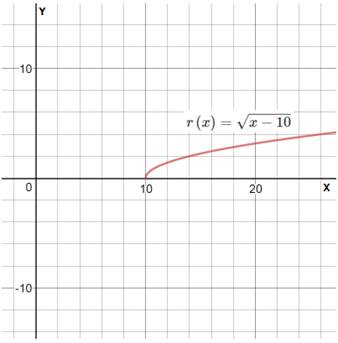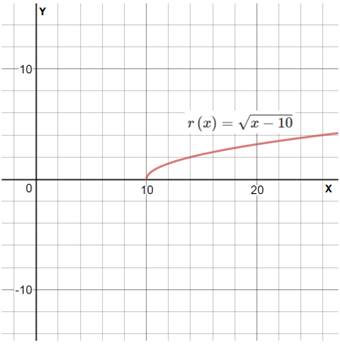
Concept explainers
a.
To Determine: The interval in which the function is increasing or decreasing.
The function is increasing on the interval of
Given information:
Graph:

From the graph, it can be seen that the graph is increasing on the interval
b.
To Determine: The function is odd, even or neither.
The function is neither even nor odd.
Given information:
Calculation:
A function is even if
Check if
Since
A function is odd if
Multiply
Since
So, the function is neither even nor odd.
c.
To Determine: The extrema of the function, if any.
There is no extrema points.
Given information:
Calculation:
Find the first derivative of the function:
Find the second derivative of the function.
To find the local maximum and minimum values of the function, set the derivative equal to
Set the first derivative equal to
Set the numerator equal to
Since
Convert expressions with fractional exponents to radicals:
Set the denominator in
Solve for
Find the values where the derivative is undefined.
Critical points to evaluate.
Evaluate the second derivative at
The expression is undefined. So, there is no extrema points plotted in the graph.
d.
To Determine: The graph of the function related to a graph of one of the twelve basic functions.
The graph is related to square root function.
Given information:
Calculation:

The function
Chapter 1 Solutions
PRECALCULUS:...COMMON CORE ED.-W/ACCESS
 Calculus: Early TranscendentalsCalculusISBN:9781285741550Author:James StewartPublisher:Cengage Learning
Calculus: Early TranscendentalsCalculusISBN:9781285741550Author:James StewartPublisher:Cengage Learning Thomas' Calculus (14th Edition)CalculusISBN:9780134438986Author:Joel R. Hass, Christopher E. Heil, Maurice D. WeirPublisher:PEARSON
Thomas' Calculus (14th Edition)CalculusISBN:9780134438986Author:Joel R. Hass, Christopher E. Heil, Maurice D. WeirPublisher:PEARSON Calculus: Early Transcendentals (3rd Edition)CalculusISBN:9780134763644Author:William L. Briggs, Lyle Cochran, Bernard Gillett, Eric SchulzPublisher:PEARSON
Calculus: Early Transcendentals (3rd Edition)CalculusISBN:9780134763644Author:William L. Briggs, Lyle Cochran, Bernard Gillett, Eric SchulzPublisher:PEARSON Calculus: Early TranscendentalsCalculusISBN:9781319050740Author:Jon Rogawski, Colin Adams, Robert FranzosaPublisher:W. H. Freeman
Calculus: Early TranscendentalsCalculusISBN:9781319050740Author:Jon Rogawski, Colin Adams, Robert FranzosaPublisher:W. H. Freeman
 Calculus: Early Transcendental FunctionsCalculusISBN:9781337552516Author:Ron Larson, Bruce H. EdwardsPublisher:Cengage Learning
Calculus: Early Transcendental FunctionsCalculusISBN:9781337552516Author:Ron Larson, Bruce H. EdwardsPublisher:Cengage Learning





